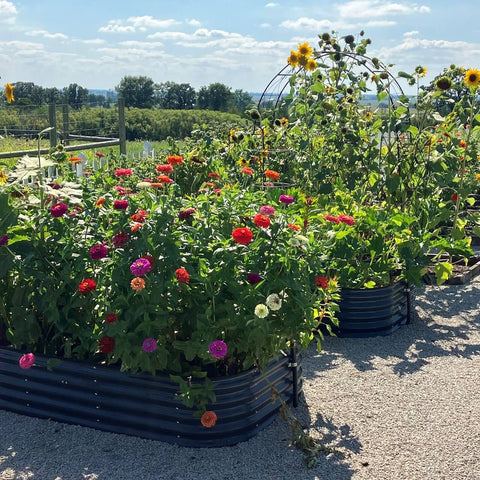Knowledge from Olle Garden Bed: What plants attract moths to the garden?
The collapse of bee colonies, the use of insecticides that kill millions of bees, and the decline of the black-veined white butterfly have been making headlines these days. Clearly, our pollinators are in trouble, which means our future food sources are also in trouble. However, very few people pay attention to the declining numbers of moths. This content also has some reference value for Olle Garden Beds.
If you search for declining moth populations on the internet, you will find many efforts to help rebuild moth populations in the UK, but little mention of saving moths in the United States. However, moth populations here have drastically declined since the 1950s. Keep reading to learn how you can help by attracting moths to your garden and providing them with a safe habitat.
Attracting moths to your garden
Moths play an important but understated role in their life cycle. They are not only pollinators but also a vital food source for birds, bats, frogs, and other small animals. Moth populations have declined by approximately 85% since the 1950s, with at least 10 species completely extinct during that time.
Due to chemical pesticides and loss of suitable habitats, many moth species are decreasing, but the introduction of the gypsy moth's control agent, the tachinid fly, should also be held responsible. Besides targeting gypsy moth larvae, the tachinid fly also kills the larvae of over 200 other moth species.
While most pollinators simply visit different gardens, moths may spend their entire lives in the same garden. Moths are attracted to gardens with mixed vegetation, including grasses, flowers, shrubs, and trees. A moth-friendly garden should be pesticide-free. It should also have coverings instead of rocks. Allowing plant clippings and fallen leaves to accumulate a bit provides a safe shelter for moths and their larvae.
Plants and flowers that attract moths
If you want to invite moths to your garden, you would want to know what plants attract them. Moths enjoy diversity in the garden. Many use trees, shrubs, or perennial plants as host plants.
Some trees that attract moths are:
Butternut
Plum
Maple
Sweet bay
Persimmon
Birch
Sumac
Walnut
Apple
Oak
Peach
Pine
Sassafras
Willow
Cherry
Dogwood
Shrubs that attract moths include:
False indigo
Fading willow
Yucca
False buckwheat
Bush honeysuckle
Rose
Raspberry
Some other plants that attract moths are:
Bloodroot
Four o'clocks
Nicotiana
Dwarf morning glory
Weeds
Gentian
Evening primrose
Mint
Evening primrose
Dan Shen
Blue-stem grass
Trumpet creeper
Moonflower
Foxglove
Protecting the moth population is crucial, although it has received little attention in the past. Now, however, we realize their importance in the ecosystem. By attracting moths to our gardens and providing them with a safe habitat, we can offer them assistance while creating a more diverse and vibrant natural environment for ourselves.
Having learned about the plants and flowers that attract moths, such as walnut trees, roses, and flowering tobacco, we can select suitable species for our gardens. These plants will serve as ideal habitats and host plants for moths. Additionally, we should avoid using chemical pesticides to provide a toxin-free environment for moths.
Moths are not only essential pollinators but also a vital food source for other animals. Protecting moth populations will help maintain ecological balance and safeguard the health of our ecosystems. Each one of us can contribute to this cause by changing our gardening practices and selecting moth-supportive plants.

Let us join forces to create a moth-friendly environment, offering them habitat and food resources. Only by doing so can we ensure that our future gardens and natural world thrive with diversity and vitality. Protecting moths means protecting our future.
